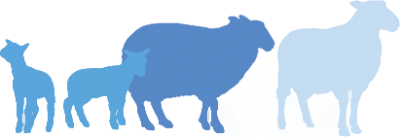
An NSA member’s thoughts on High Nature Value farming
10th August 2015
By Keith McDougall, Wells-next-the-Sea, Norfolk. NSA Vice President
The article by Pat Thompson of the RSPB in the last edition of Sheep Farmer (July/August 2015 – download the article below) was thought-provoking. The idea that many areas of our uplands are precious for their wildlife and beauty is obvious. They have been described as the lungs of our urban populations, have designations as National Parks , and attract visitors in huge numbers. The Peak District National Park alone attracts more than 22 million visitors per year.
Natural England and their equivalent agencies in Scotland and Wales are well aware of the problems and opportunities. But, as usual, the bits and pieces as to how to deal with these areas in terms of economic and protection measures seem forever arguable.
But one basic fact has to be remembered – the heather moors and other high hill areas were created floristically and ornithologically by the grazing of sheep and cattle. Hill farming has always been about livestock and the viability of keeping livestock on natural range pastures. It is a low income, extensive system. Prior to the Reformation, vast tracts of moorland were grazed under the jurisdiction of the great abbeys and monasteries, the wool being exporting for wearing in the low counties. Boston in Lincolnshire was exporting wool from two million sheep from the unenclosed areas of East Anglia and Yorkshire. The woolsack in the House of Lords is a reminder of this medieval wealth.
Nowadays, hill farming represents a relatively minor slot in UK food production but many, including the RSPB, realise its value for the reasons listed above. Tourism, sport (grouse shooting and stocking), fishing and simply walking the Pennine Way all contribute to a miscellany of income streams for those who live and work in the dales, hills and mountains. Grouse shooting (which the RSPB claims not to be targeting) contributes more than £100m to areas where it is economically viable. B&B, hiking, fishing and touring probably contribute three or four times that figure.
So where does the wildlife come in? Such specialities as curlew, lapwing, mountain hares, red deer, raptors and many vertebrates and high altitude plants depend on a subtle mosaic of conditions including sphagnum moss peat areas, scree slopes, rough pastures, heather moorland and clean river systems. Of course, keeping all this in balance means a farm network of hill sheep and cattle, as this is still the main driving force to help our hills exist as they are. The RSPB targets this at their peril, and government agencies have a duty not to let hill farming collapse – as it would without targeted support, preferably based on some form of (horror of horrors) headage payments on the breeding ewe and hill cow.
Not so long ago we had the ewe premium and the suckler cow premium. Is it time to return to this system, based on the real benefits that they generate in High Nature Value areas? Is it a question that the UK governments need to address within any revamped High Nature Value system of support?
Given balanced hill stocking rates and a skilled and devoted farming community, we can save our hill and mountain areas for the future. Grouse, red deer, camping, hiking, fishing and the plain beauty of our precious hills can be saved, not by wild, ill-thought-out ‘rewilding’ but by a conscious policy of support for properly grazed hills and fells – before it is too late.


